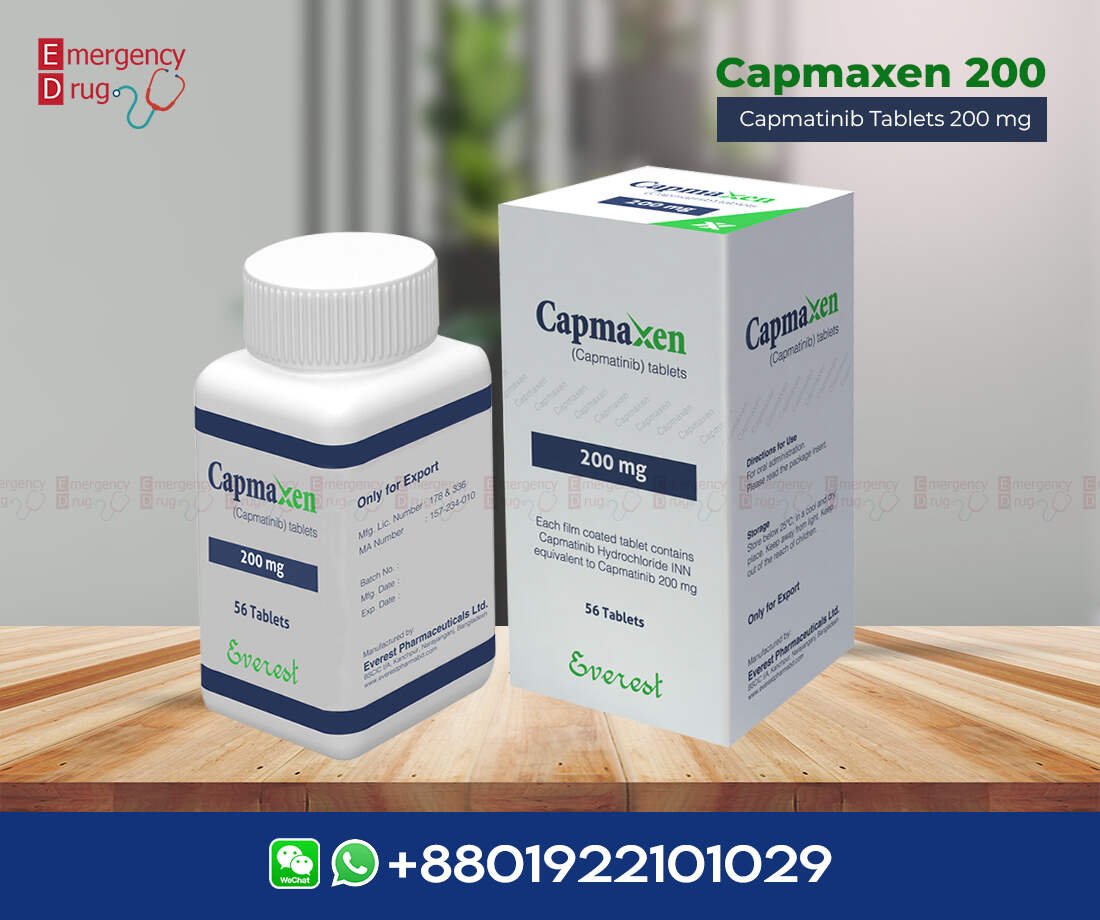Capmatinib
Capmatinib
Showing the single result
Capmatinib : Mechanism of Action, Uses & Safety
✅ What is Capmatinib?
Capmatinib is a targeted kinase inhibitor used for treating metastatic non-small cell lung cancer (NSCLC) in patients with tumors that exhibit a MET exon 14 skipping mutation. This mutation causes overactivation of the MET (mesenchymal-epithelial transition) receptor tyrosine kinase, contributing to uncontrolled cancer cell growth.
Brand names: Capmaxen®, Tabrecta®
Drug class: MET inhibitor / Tyrosine kinase inhibitor (TKI)
⚙️ Mechanism of Action
Capmatinib works by selectively inhibiting the c-MET receptor tyrosine kinase, including both wild-type and mutant forms associated with exon 14 skipping. Here’s how it works:
-
MET exon 14 skipping mutations result in the loss of a regulatory domain of the c-MET protein.
-
This leads to constitutive (uncontrolled) MET signaling, driving cancer cell survival and proliferation.
-
Capmatinib:
-
Blocks MET phosphorylation triggered by its natural ligand hepatocyte growth factor (HGF).
-
Prevents activation of downstream signaling pathways such as PI3K/AKT, RAS/MAPK, and STAT.
-
Inhibits the proliferation, invasion, and survival of MET-dependent tumor cells.
-
Preclinical models have shown significant tumor regression in NSCLC xenografts with MET exon 14 mutations or MET amplification.
💊 Indications
Capmatinib is indicated for:
-
Adults with metastatic NSCLC harboring MET exon 14 skipping mutations, as detected by an FDA- or EMA-approved test.
🧬 Targeted Patient Population
-
Patients with advanced or metastatic NSCLC who test positive for METex14 alterations.
-
Especially useful in cases where other therapies fail or are not well tolerated.
⚠️ Warnings and Precautions
| Adverse Effect | Details |
|---|---|
| Interstitial Lung Disease (ILD)/Pneumonitis | May be fatal. Discontinue if ILD is suspected. Monitor for cough, fever, dyspnea. |
| Photosensitivity | Capmatinib may cause phototoxicity. Advise patients to use sunscreen and avoid tanning. |
| Hepatotoxicity | Monitor liver function tests. May require dose adjustment or discontinuation. |
| Embryo-Fetal Toxicity | May cause fetal harm. Use effective contraception during and after treatment. |
📊 Clinical Pharmacology
| Parameter | Description |
|---|---|
| Absorption | Rapid oral absorption |
| Metabolism | Primarily via CYP3A4 and aldehyde oxidase |
| Elimination | Feces (78%), urine (22%) |
| Half-life | ~6.5 hours |
| Protein binding | ~96% |
🌐 Regulatory Status
-
FDA approval (US): Yes, for MET exon 14-mutated NSCLC.
-
EMA approval (EU):
-
Positive opinion granted by CHMP on April 22, 2022.
-
EU approval: September 2022 under the trade name Tabrecta® by Novartis Europharm Ltd.
-
📢 Patient Counseling Points
-
Avoid sun exposure: Use broad-spectrum sunscreen (SPF ≥30), wear protective clothing.
-
Report symptoms like shortness of breath, persistent cough, or fever immediately.
-
Avoid pregnancy during treatment and for 1 week after the final dose.
-
Inform healthcare providers about any liver issues or use of CYP3A4 modulators.
🧾 Summary
For metastatic non-small cell lung cancer, capmatinib is a targeted MET inhibitor. Examine its brands, side effects, dosage, and mechanism. EmergencyDrug.com offers quick delivery.

